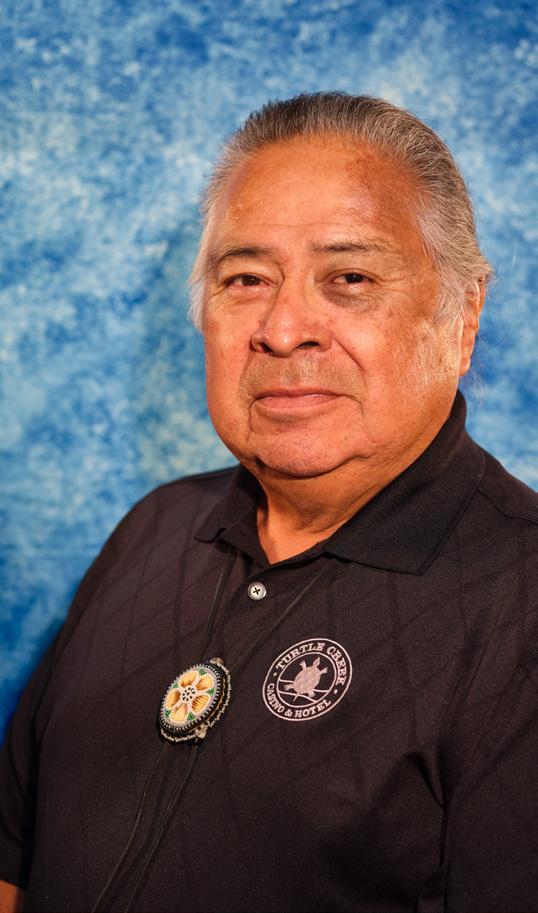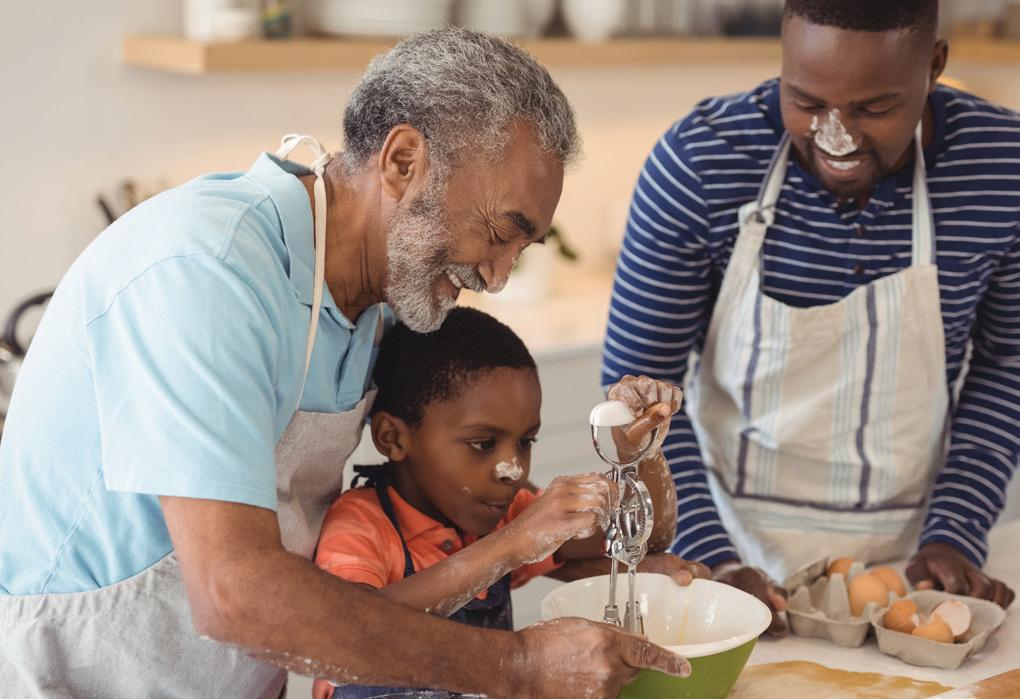
5 minute read
From the Vice Chairmans Office
from GTB NEWS MAY 2023
by GTB NEWS
Bob Kewaygoshkum
Ah-Boozhoo Aanii ---
Advertisement
As I grow into getting my to match some tasks has become more challenging and more hazardous. By no means do we feel old, and in many ways, we have the physicality and mentality of a younger person, but our body is not as good as it once was. I surely notice balance issues from time to time and we’ve got to know our limitations.
Okay, this is an excerpt from the Center for Disease Control, “Every second of every day, an older adult (age 65+) suffers a fall in the U.S.-making falls the leading cause of injury and injury death in this age group. One out of four older adults will fall each year in the United States, making falls a public health concern, particularly among the aging population. About 36 million falls are reported among older adults each year-resulting in more than 32,000 deaths. Each year, about 3 million older adults are treated in emergency departments for a fall injury.
One out of every five falls causes an injury, such as broken bones or a head injury. Each year at least 300,000 older people are hospitalized for hip fractures. More than 95 percent of hip fractures are caused by falling-usually by falling sideways. Women fall more often than men and account for three-quarters of all hip fractures.” Sounds like some bad odds for us who are headed in that direction, age-wise that is. But studies also show that falls are not inevitable. Most falls come not from aging, but from not paying attention to the changes in your body. Balance is a relative thing. It almost totally depends on our willingness to educate ourselves and family, exercise, and make changes to our environment to lend support and minimize fall hazards. I know you’ve heard it before- just a reminder.
Education and reminders are important as we age. This includes knowing what your body is telling you regarding your balance and being aware of factors such as medications that might cause dizziness or an unbalanced state of mind or physical conditions that might cause a sudden “swimmy” head or weak knee. Exercise includes physical activity specifically designed to address muscle fitness and memory, especially in the legs and abdomen, and upper body strength is important so that we can “catch ourselves when we fall”. There is exercise equipment that is specifically designed to increase coordination and balance. And then there is making our homes safer. Adjusting things like the height of our step needed to get into the shower and cleaning up clutter and not taking unnecessary chances. We as Elders need to start taking notice on slowing down to take just a moment to assess our environment before proceeding in our activities. This might prevent a disastrous fall.
Several weeks ago, I was working in my garage trying to do a little organization, and was hopping, yes hopping, back and forth over my snow blower to get to an area where my tools were. Suddenly, one of my feet caught the arm of snow blower in mid-hop. Just like in the picture show, everything went into slow-motion. As I fell, I even had time to pray for the landing. Fortunately, no bones were broken. So, I am getting up from this fall and first thinking how stupid it was for me to be hopping over the snowblower in the first place and checking myself for injury and wondering if anyone was watching.
Use this checklist to find and fix hazards in your home.
STAIRS & STEPS (INDOORS & OUTDOORS)
Are there papers, shoes, books, or other objects on the stairs?
Always keep objects off the stairs.
Are some steps broken or uneven?
Fix loose or uneven steps.
Is there a light and light switch at the top and bottom of the stairs?
Have an electrician put in an overhead light and light switch at the top and bottom of the stairs. You can get light switches that glow.
Has a stairway light bulb burned out?
Have a friend or family member change the light bulb.
Is the carpet on the steps loose or torn?
Make sure the carpet is firmly attached to every step, or remove the carpet and attach non-slip rubber treads to the stairs.
Are the handrails loose or broken? Is there a handrail on only one side of the stairs?
Fix loose handrails, or put in new ones. Make sure handrails are on both sides of the stairs, and are as long as the stairs.
Other than soreness and bruises, and a direct hit to my pride, everything else, I was spared damage. I got through the experience without injury but was lucky. I tell you this because it can be so easy for us to over-estimate our balance and dexterity. Because I had always been so sure-footed, I neglected some basic safety precautions. I let personal pride allow me to be careless. And a split-second of carelessness is all it takes to end up in tragedy. I got off easy.
We, as a Tribe, repeatedly talk about the importance and value we put on our Elders. As Elders, we can be a stubborn bunch. I am a fan of the line of t-shirts that speak to the mentality of most of us as we march toward those “golden years”. One such shirt reads, “I’m old man. I do what I want, when I want, where I want! Except I gotta ask my wife…one sec.” or “Age has its advantages; too bad I can’t remember what they are.” We all like to feel in control. But to be in control, we must have a sense of balance. We can tell you that sometimes we hear things from family, friends, and our doctor that we simply do not want to hear or believe. If we choose to ignore those voices, we ignore the balance those voices bring to our life. The good news is that we have always had an inquisitive mind, researching things that either interest us or affect our life in some way. We hope to never lose that.

We hope you are similarly inclined to search for answers, to find balance for your life. You impact more than just yourself. That circle of family and friends, and possibly many who may never have direct contact with, need your wisdom and guidance. We never know who is watching us and learning from us. Elders take care of yourself & know your limitation because we would like to have you around for a long time.
Protect your wisdom and your ability to share it with others
I wish you well, Pama
Floors
When you walk through a room, do you have to walk around furniture?
Ask someone to move the furniture so your path is clear.
Do you have throw rugs on the floor?
Remove the rugs, or use double-sided tape or a non-slip backing so the rugs won’t slip.
Are there papers, shoes, books, or other objects on the floor?
Pick up things that are on the floor. Always keep objects off the floor.
Do you have to walk over or around wires or cords (like lamp, telephone, or extension cords)?
Coil or tape cords and wires next to the wall so you can’t trip over them. If needed, have an electrician put in another outlet.
Kitchen
Are the things you use often on high shelves?
Keep things you use often on the lower shelves (about waist high).
Is your step stool sturdy?
If you must use a step stool, get one with a bar to hold on to. Never use a chair as a step stool.
Bedrooms
Is the light near the bed hard to reach?
Place a lamp close to the bed where it’s easy to reach.
Is the path from your bed to the bathroom dark?
Put in a nightlight so you can see where you’re walking. Some nightlights go on by themselves after dark.
Bathrooms
Is the tub or shower floor slippery?
Put a non-slip rubber mat or self-stick strips on the floor of the tub or shower.
Do you need some support when you get in and out of the tub, or up from the toilet?
Have grab bars put in next to and inside the tub, and next to the toilet




